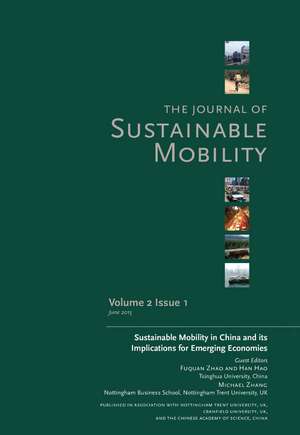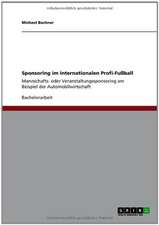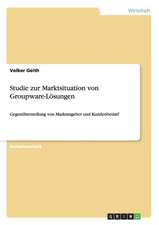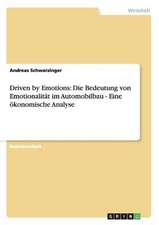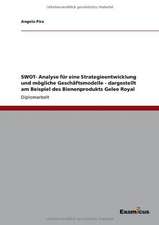Journal of Sustainable Mobility Vol. 2 Issue 1: Sustainable Mobility in China and its Implications for Emerging Economies
Editat de Michael Zhang, Fuquan Zhao, Han Haoen Limba Engleză Paperback – 31 mai 2015
Preț: 190.88 lei
Preț vechi: 245.88 lei
-22% Nou
Puncte Express: 286
Preț estimativ în valută:
36.53€ • 39.67$ • 30.68£
36.53€ • 39.67$ • 30.68£
Carte tipărită la comandă
Livrare economică 22 aprilie-06 mai
Preluare comenzi: 021 569.72.76
Specificații
ISBN-13: 9781783535200
ISBN-10: 1783535202
Pagini: 70
Dimensiuni: 174 x 246 mm
Greutate: 0.45 kg
Ediția:1
Editura: Taylor & Francis
Colecția Routledge
Locul publicării:Oxford, United Kingdom
ISBN-10: 1783535202
Pagini: 70
Dimensiuni: 174 x 246 mm
Greutate: 0.45 kg
Ediția:1
Editura: Taylor & Francis
Colecția Routledge
Locul publicării:Oxford, United Kingdom
Public țintă
PostgraduateCuprins
Editorial; Sustainable Mobility in China from a Global Perspective; Guest Editorial; Sustainable Mobility in China and its Implications for Emerging Economies; Transport Transitions in Beijing: From Bikes to Automobiles to Trains; Evaluating Market Competitiveness of Battery Electric Cars in the Chinese Market; An Eco-efficiency Assessment Model and System for Automotive Products in China; Community-Based Mobility Services as Part of a Sustainable Transport System for Suburban China: The Example of Shared Shuttles (banche) in Shanghai
Notă biografică
Fuquan Zhao and Han Hao, Tsinghua University, China Michael Zhang, Nottingham Trent University, UK.
Descriere
After three decades of rapid economic growth, China became the world’s second largest economy in 2010 after the United States of America. Along with the prospect of lifting millions out of poverty and improving living standards, China is facing yet new challenges of rapid urbanization. Recent research findings show that in 2012 urbanization rate was 52.6% in China (Lacy et al., 2013).
